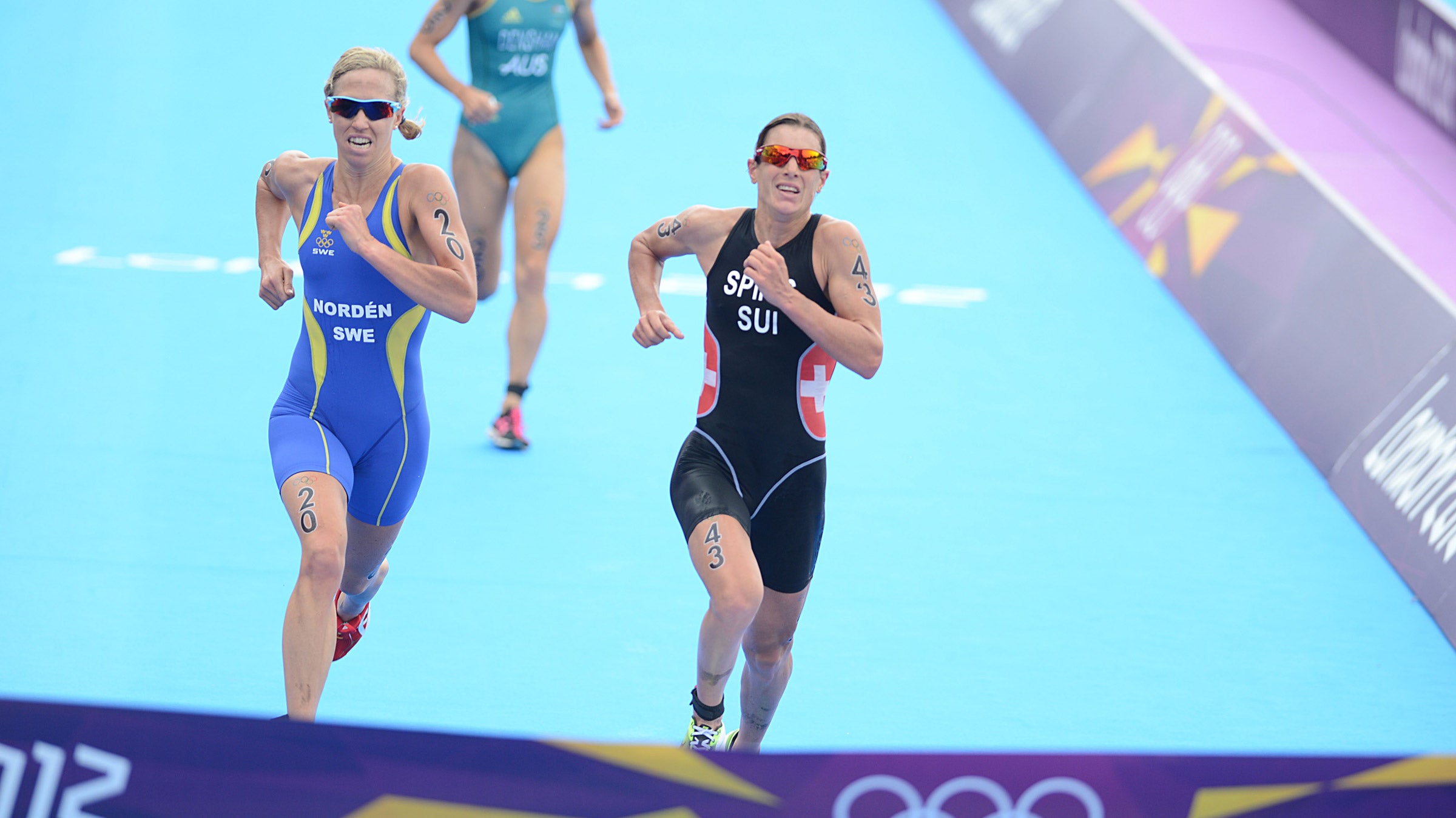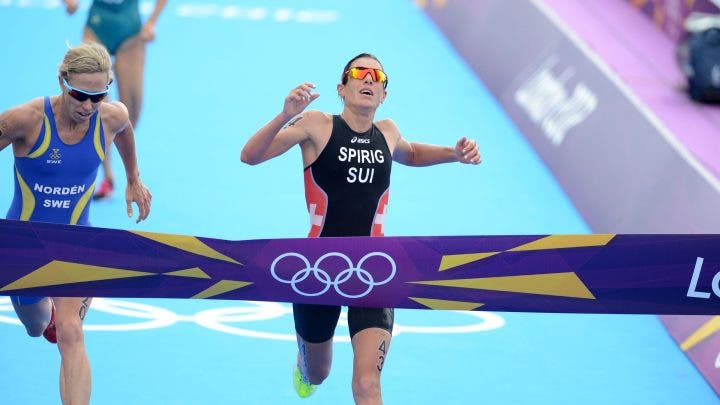Recalled: The Closest-Ever Olympic Triathlon Finish

Nicola Spirig and Lisa Norden sprint to the finish line. (Photo: Delly Carr/Triathlon.org)
As World Triathlon Championship Series races are set to resume next month and Olympic team selections will be finalized for several countries including the U.S., the buzz leading to Tokyo is becoming more palpable. Sure, the games will look much different this year–no streets full of screaming fans, and no overseas fans at all for that matter–but the competition should be just as hot as ever. In the two decades that it has been an Olympic event, the sport of triathlon has delivered epic racing: In 2016, we saw Gwen Jorgensen emotionally grab the tape as the first-ever American woman to win gold; there have been major upsets, and sprint finishes almost too close to call.
One such finish? The unforgettable showdown at the line between Switzerland’s Nicola Spirig, then 30, and Sweden’s Lisa Norden, then 27, in London’s 2012 games. The race was so tight, in fact, that it couldn’t be called right away. Event officials had to analyze finish line footage frame-by-frame to determine that Spirig would get the gold, but by the slimmest of margins–with just about the width of a human hair between them.
One of the reasons we often see just seconds separating athletes in WTS and Olympic events is because the race format is draft-legal and tactical, often coming down to a footrace. On the bike, the top athletes are typically grouped up in a peloton, either in a main pack or a breakaway. If athletes have slower swims and miss the front group, they’re left chasing the leaders–and can be potentially out of the race before they even clip into the bike (although some do manage to bridge that gap successfully and go on to do well). And when the lead pack comes into transition like a herd of stampeding buffalo on wheels, there can be many triathletes still in podium contention.
That was the case in the London Olympics when the lead pack of some 22 women came rolling into T2. The pace was blistering from the start and kept up as the women wound their way around Hyde Park in front of crowds stacked 10-deep. Soon, the lead group was whittled down to 12, then to eight, then to just four, as athletes were spit off the back one by one. With a little less than a mile to go, it was Spirig, Norden, Australian Erin Densham, and American Sarah Groff (now True) running shoulder-to-shoulder. Three of those women would collect medals. But who would win gold?

Turns out, it would be Spirig, who said after the race that she has been preparing for a sprint finish in workouts, and was ready to throw in a final surge with just meters to go. Only Norden responded, and the two powered to the finish line step for step, chiseled arms pumping, neither willing to relent. It was impossible to tell who actually crossed the line first–and both women were given the same official time. But, after careful analysis, it was determined that Spirig nipped Norden by mere millimeters. Densham was just two seconds behind them, and Groff in the heartbreaking fourth position 10 seconds away from bronze. All four women were well under 34 minutes over the 10K–clocking around 5:25 per mile (after, of course, covering 1500m in the water at an average of 1:10/100m and the 40K bike at speeds of around 23mph).

Will we see another sprint finish in Tokyo in the men’s or women’s races? Sure. But it’s unlikely we’ll ever see a finish closer than the spectacular show put on by Spirig and Norden nine years ago.
RELATED: Watch: Triathletes Prepare with 100 Days to the Olympics